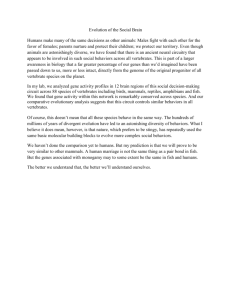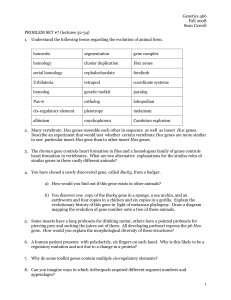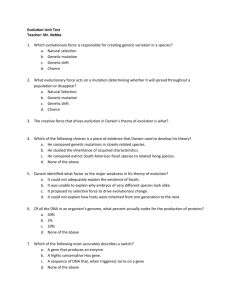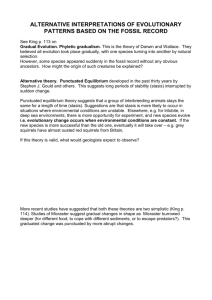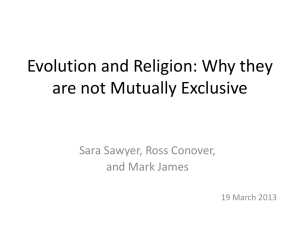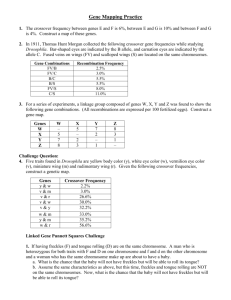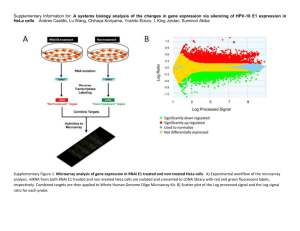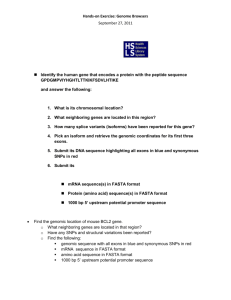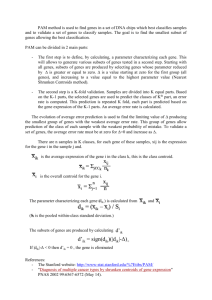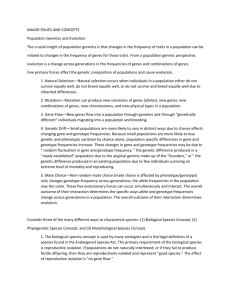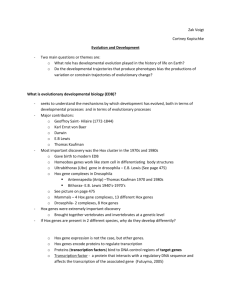File - Mrs. LeCompte
advertisement
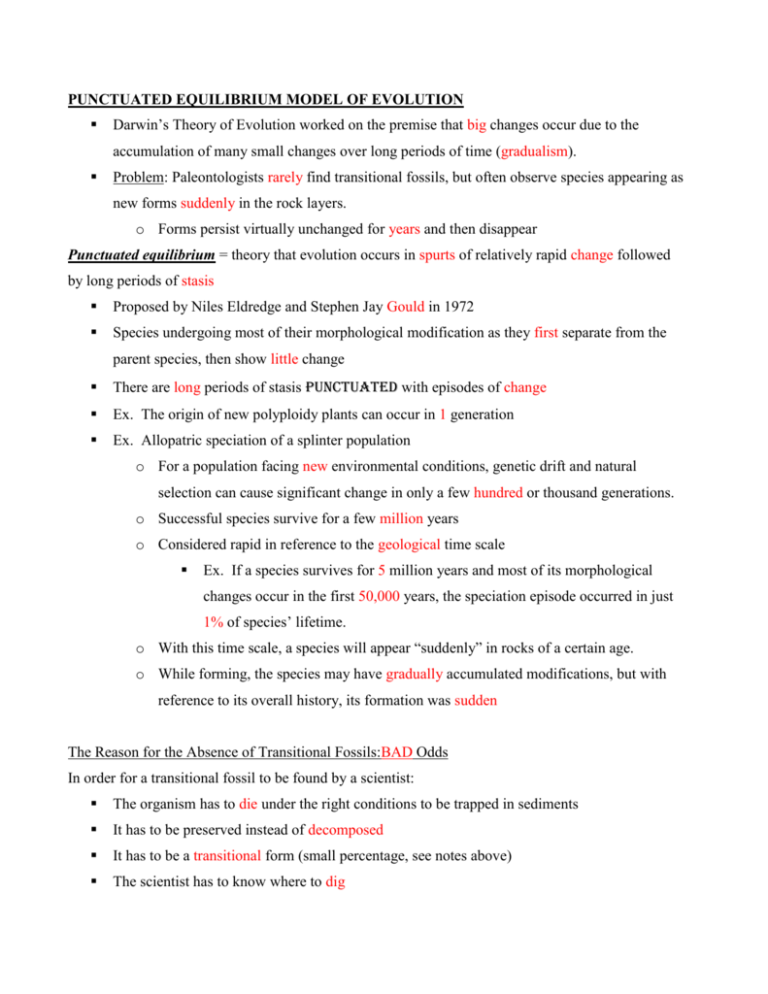
PUNCTUATED EQUILIBRIUM MODEL OF EVOLUTION Darwin’s Theory of Evolution worked on the premise that big changes occur due to the accumulation of many small changes over long periods of time (gradualism). Problem: Paleontologists rarely find transitional fossils, but often observe species appearing as new forms suddenly in the rock layers. o Forms persist virtually unchanged for years and then disappear Punctuated equilibrium = theory that evolution occurs in spurts of relatively rapid change followed by long periods of stasis Proposed by Niles Eldredge and Stephen Jay Gould in 1972 Species undergoing most of their morphological modification as they first separate from the parent species, then show little change There are long periods of stasis punctuated with episodes of change Ex. The origin of new polyploidy plants can occur in 1 generation Ex. Allopatric speciation of a splinter population o For a population facing new environmental conditions, genetic drift and natural selection can cause significant change in only a few hundred or thousand generations. o Successful species survive for a few million years o Considered rapid in reference to the geological time scale Ex. If a species survives for 5 million years and most of its morphological changes occur in the first 50,000 years, the speciation episode occurred in just 1% of species’ lifetime. o With this time scale, a species will appear “suddenly” in rocks of a certain age. o While forming, the species may have gradually accumulated modifications, but with reference to its overall history, its formation was sudden The Reason for the Absence of Transitional Fossils:BAD Odds In order for a transitional fossil to be found by a scientist: The organism has to die under the right conditions to be trapped in sediments It has to be preserved instead of decomposed It has to be a transitional form (small percentage, see notes above) The scientist has to know where to dig It has to not be destroyed by current life or geology The scientist has to dig out the fossil without destroying it o When put together, the odds of finding a transitional fossil are very slim! The Origin of Evolutionary Novelty Most evolutionary novelties are modified versions of older structures; Developmental Genes play a major role in Macroevolution Changes at several gene loci are probably involved o Ex. Changes in Homeotic (Hox) genes in animals alters the location of repeated structures in all vertebrates Development of the Eye Animals have eyes that vary from compound to single-lens Pax6 gene is required for eye formation in all animals Development of Limbs The Tbx5 gene is necessary for limb bud development in embryos Birds and humans both express this gene, but differ in which genes turn it on Subtle changes in gene control can have profound effects on the shape of the body, which could explain the tremendous variation we see in organisms of all kinds Development of Overall Shape Hox genes control the # and appearance of repeated structures along the main body axes in vertebrates Changes in Hox gene expression in embryos alters the appearance of the baby/organism o Ex. Chick v. Snake vertebrae Pelvic-Fin Genes Pitx1 gene timing results in either long or short stickleback pelvic spines Hindlimb reduction has occurred during the evolution of some vertebrates, like whales and manatees. Both evolved from land-dwellers. Stickleback study showed how natural selection can lead to major skeletal changes in a relatively short time Human Evolution All vertebrates have ̴ 23,000 genes Scientists do not expect to find new genes to account for humans, rather they expect to find differential gene regulation A slight alteration of development becomes compounded in its effect on adult Allometic growth (differences in growth rates & timing of various parts of the body) which helps to shape an organism. An Evolutionary Trend Does NOT Mean That Evolution is Goal-Oriented Ex. Horse Evolution – many paths led to “dead ends” Each ancestral species was well-adapted to its environment, but over time as their environment changed, different variations were selected for

